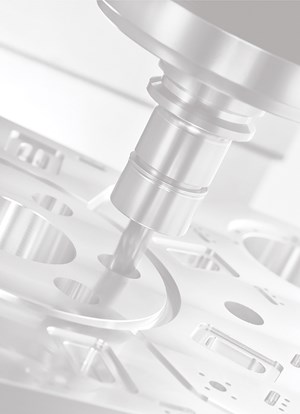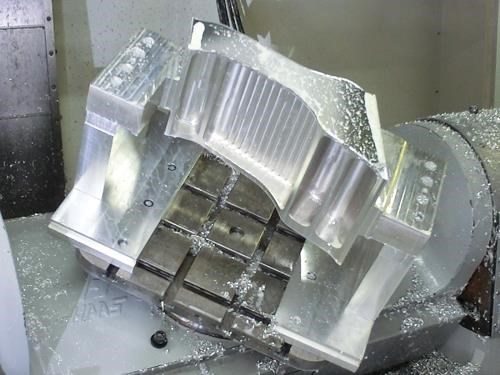Clamping Options for Five-Axis Machining
In five-axis machining, the workholding has to get out of the way. The wrong choice of clamping risks collision and can obscure one of the principal benefits of a five-axis machine.
Share



In five-axis machining, the workholding has to get out of the way. This is one of the challenges. Particularly on trunnion-style machines that pivot the part instead of the tool, the wrong choice of clamping or fixturing risks collisions as the part rotates through compound angles. Meanwhile, one of the promises of five-axis machining is the ability to cut various faces of the part in a single setup. That benefit is compromised if the workholding device—say, a standard vise—covers up the surfaces of the part.
For shops rethinking their workholding for five-axis machining, Haas Automation posted this useful article detailing various fixturing options engineered specifically for five-axis machining.
One other approach, seen in the accompanying photo, is to make the workpiece itself the fixture by clamping the billet and machining the part out of it. This photo was taken at Padgett Machine. Read about Padgett’s experience with five-axis machining here.
Related Content
-
Get a Grip on Your Workholding Processes
From adhesive fixturing to automated changeovers, these articles show how shops are rethinking workholding to improve efficiency and accuracy. Whether it's collet choice, custom fixtures, or balancing density with simplicity, smarter setups are driving better results.
-
Prioritizing Workholding Density Versus Simplicity
Determining whether to use high-density fixtures or to simplify workholding requires a deeper look into the details of your parts and processes.
-
Chuck Jaws Achieve 77% Weight Reduction Through 3D Printing
Alpha Precision Group (APG) has developed an innovative workholding design for faster spindle speeds through sinter-based additive manufacturing.













.png;maxWidth=300;quality=90)






